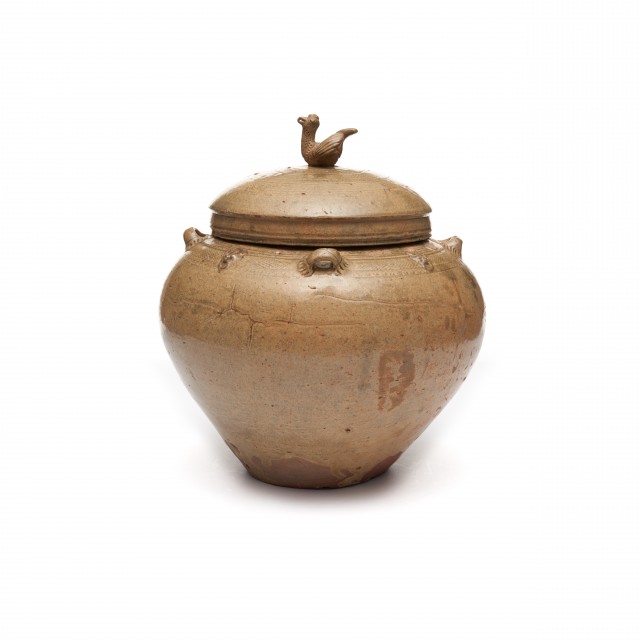
Covered Jar

Photography by Synthescape, Digital image © Asia Society
Covered Jar
about late 3rd-early 4th century
China, Zhejiang Province
Stoneware with impressed and applied design under glaze (Yue ware)
H. 10 7/8 including cover x Diam. 10 in. (27.6 x 25.4 cm)
Asia Society, New York: Mr. and Mrs. John D. Rockefeller 3rd Collection, 1979.126a,b
Licensing inquiries
This covered jar dating to the late 3rd or early 4th century illustrates two important technical developments: the use of stoneware for the body, and of glaze. Stoneware is a more refined clay than earthenware and can also be fired at a higher temperature. It was first produced in some quantity in south China during the Shang dynasty (about 1700-1027 B.C.E.). Glazes -- a mixture of water and substances containing silica, which vitrifies during firing, and other ingredients for color and texture -- were also known in China as early as the Shang dynasty. The gray-olive glaze that coats this jar makes it an early example of the type of wares commonly known as celadons. This charming jar is an example of Yue wares, which were first produced in some quantity during the Eastern Zhou period (771-221 B.C.E.), and make up the majority of tomb goods found in burials dating to that period. This jar, which dates to the Western Jin dynasty (C.E. 265-316), is adorned with a delightful bird with outstretched wings that serves as the knob for the cover.

